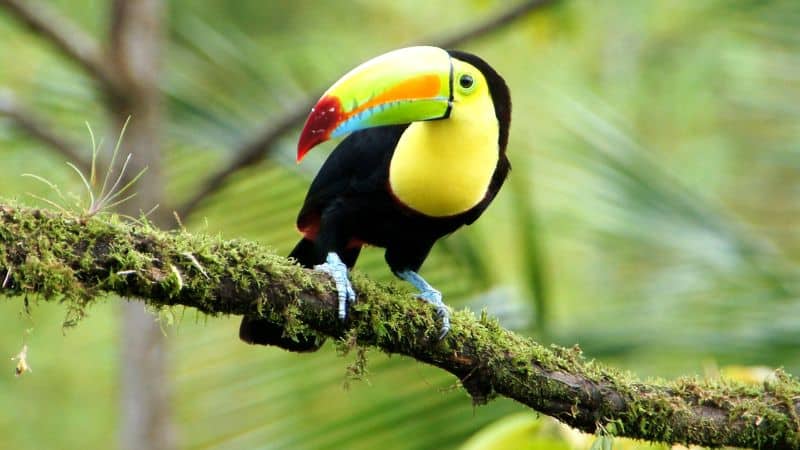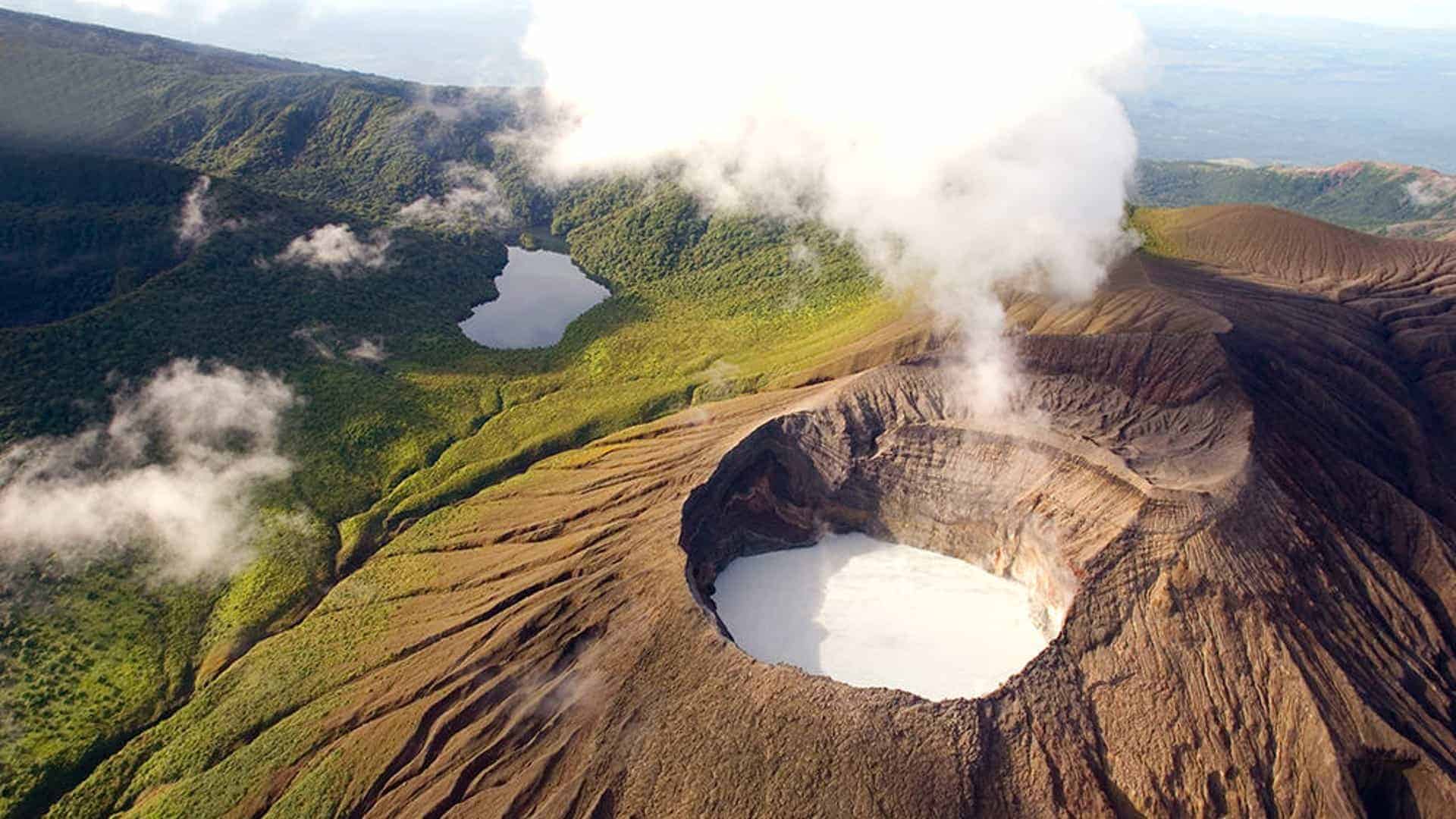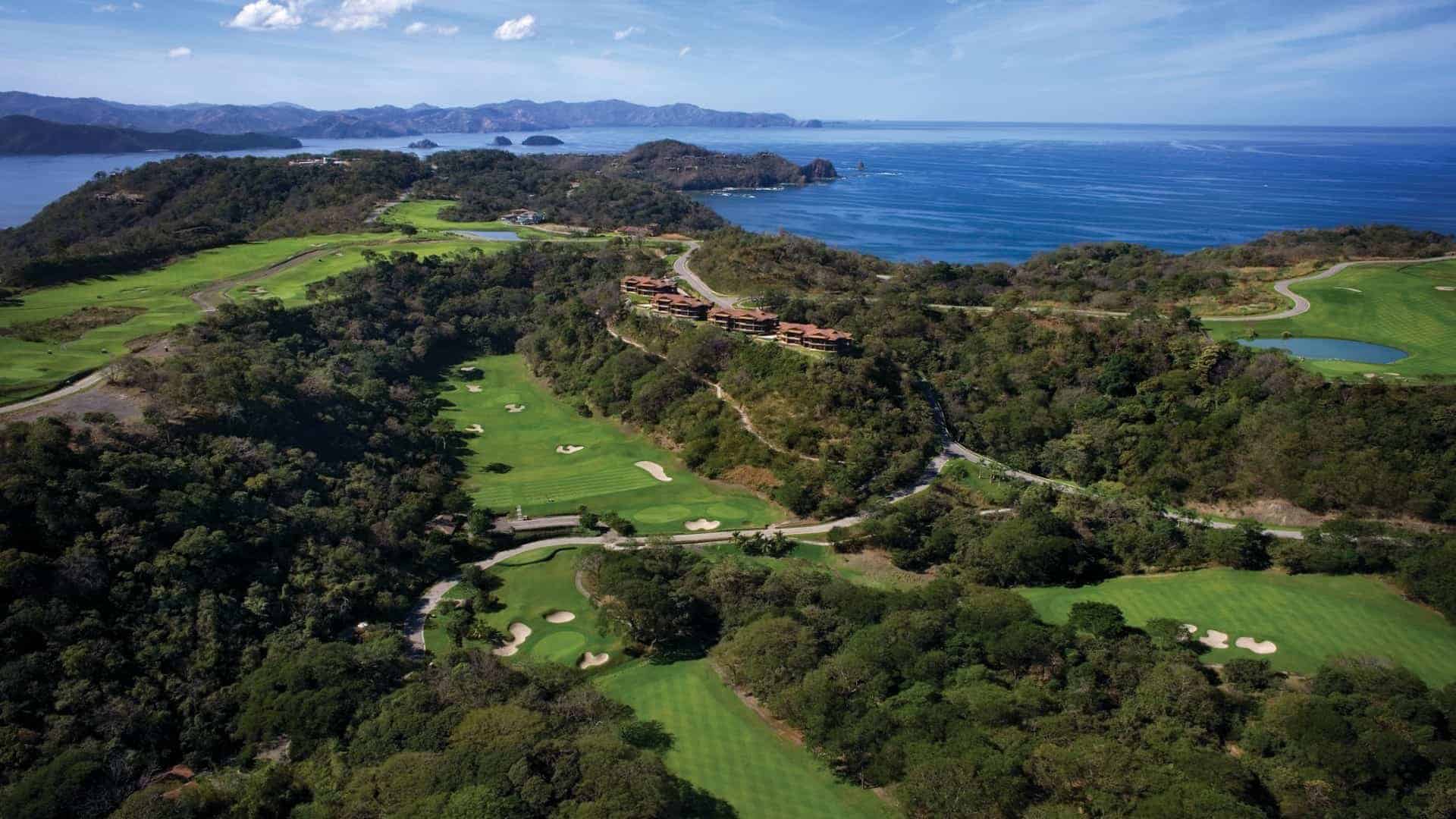Table of contents
Costa Rica is a beautiful country located in Central America. It is blessed with unique geography and landscapes, allowing it the privilege to house 5% of the biodiversity of planet Earth. Its topography highlights beachfront fields and rainforests isolated by rough mountains and volcanoes. With only 51,100 sq km (19,730 sq miles), this green country has it all.
The immense diversity contained in this small country is surreal and quite exciting to explore. If visiting Costa Rica is in your near future plans, the information below will be useful as it will guide you towards the best landscapes this country offers.
Costa Rica Landscape

One of the reasons so many tourists are attracted to Costa Rica is the variety of beautiful types of landscapes it has in such a small territory. These amazing settings are:
Beaches
Costa Rica has a total of 763 miles of coastline and around 600 beaches throughout the national territory, both on the Pacific and the Caribbean. They are all different in size, color, surroundings, and wildlife. You can find white, golden, and even black sand, or crushed sea shells all around the coast. Some are good for swimming, and snorkeling, others for surfing, but one thing they all have in common is that they offer breathtaking sunsets.
Islands and Archipelagos
Most of the Costa Rican islands are uninhabited, making them perfect settings for wildlife viewing, which is why most of the islands are national parks, nature reserves, and seabird sanctuaries.
Mangroves
Mangroves are a group of trees and shrubs that live in a swampy area between the shore and the sea. They don’t grow everywhere in the world, but Costa Rica is lucky to have 7 different species of Mangroves, most of which extend along the entire Pacific coast.
Mountains and Volcanoes
Costa Rica’s geographical location is within the so-called Pacific ring of fire that brings together most of the world’s volcanoes. It has around 112 volcanoes, 10 of which have some activity such as solfataras, fumaroles, and sporadic eruptions.
The mountains of Costa Rica captivate lovers of highlands and wide panoramas. There is no other country in the isthmic area that has so many traced and served routes to the mountains. The country’s orographic system has three powerful mountain ranges: the Talamanca Mountain Range, the Central Volcanic Mountain Range, and the Guanacaste Volcanic Mountain Range.
Rivers and Waterfalls
Costa Rica is one of the richest countries in water resources in the world. The combination of a very mountainous topography and high rainfall over a small geographic area provides runoff for surface water and sufficient recharge for groundwater. The rivers of Costa Rica are divided into three main slopes according to the point where they flow: the northern slope (Lake Nicaragua and the San Juan River), the Caribbean Sea, and the Pacific Ocean. There are many magical waterfalls in Costa Rica of different sizes and colors, some are hidden in the mountains, requiring one to embark on a hike to see them, and others are easy to reach.
Forests
According to the National Inventory, Costa Rica registers a list of more than 2,040 forest species, one of the highest numbers in the tropical world. The six types found in its territory are tropical rainforest, tropical dry forest, lowland rainforest, cloud forest, riparian forest, and mangrove swamps.
Subscribe to our newsletter
to stay up to date
Geographic Areas of Costa Rica
All the landscapes previously described are distributed throughout six geographical regions into which Costa Rica is divided. Keep reading to find the most recommended places to visit per region.
North Pacific. The North Pacific of Costa Rica is an area of extensive coastal zone and rich in ecosystems of great national and international importance, such as tropical forests, dry tropical forests, and wetlands. It is located in the northwest of the country, mainly in the province of Guanacaste, famous for its pristine beaches.
Our recommended places to visit are Playa Flamingo, Playa Conchal, Playa Tamarindo, Rincon de la Vieja National Park, Llanos de Cortes Waterfall, Catalinas Islands, and Palo Verde National Park.
Central Pacific. Located from the province of Puntarenas to the small town of Uvita, this area contains humid and dry tropical forests, famous beaches, and a large amount of wildlife.
Some must-visit places in this area are Manuel Antonio National Park and all its nearby beaches (Espadilla, La Mancha, Biesanz Beach, among others), Jaco Beach, Savegre River, Marino Ballena National Park, and Carara National Park.
South Pacific. This is a region filled with the scenic beauty of its beaches, mountainous areas, valleys, exuberant tropical rain forests, and adrenaline-charged activities. The South Pacific zone is considered the last frontier to explore with the largest number of protected areas and indigenous reserves in Costa Rica.
Some fantastic spots we suggest to visit in the South Pacific are Nauyaca waterfalls, Osa Peninsula, Corcovado National Park, Cano Island Biological Reserve, Playa Dominical, Pavones, Chirripo National Park, and Cocos Island National Park.
Northern Lowlands. The Northern Region of Costa Rica is an area that extends from the western swamps of the northern Caribbean to the Miravalles and Tenorio volcanoes and is home to some of the most impressive destinations in the country.
If you want to be blown away by what the northern lowlands offer you should visit Arenal Volcano, Monteverde, Tenorio National Park, Rio Celeste Waterfall, Sarapiqui River, La Fortuna waterfall.
Central Valley. With a favorable climate and ample rainfall, the Central Valley is home to almost three-fifths of the country’s population. San Jose, the capital city, is located in the center of this region together with the cities of Cartago, Alajuela, and Heredia.
The most visited places in the Central Valley include the Poas Volcano, Irazu Volcano, La Paz Waterfall Gardens, Guayabo National Monument, and Braulio Carrillo National Park.
Caribbean Coast. The Caribbean Region of Costa Rica extends from Nicaragua to Panama and covers 124 miles, focusing mainly on the province of Limon. Here there is a very particular mix of beaches, unique national parks, and wildlife sanctuaries.
The highly recommended places to visit in the Caribbean are Gandoca Manzanillo wildlife refuge, Tortuguero Channels, Cahuita National Park, Cocles Beach, Puerto Viejo, Playa Chiquita, and Barra del Colorado National Wildlife Refuge.
Sustainability Challenges
Despite receiving the highest environmental award from the United Nations in 2019 for its leadership in the fight against climate change, Costa Rica continues to face sustainability challenges. The good thing is that these defiances have been identified and are on the path to be eventually resolved. Some of the issues that need current attention are deforestation, improving the management of solid waste, educating the population about recycling strategies, and water protection.
Conservation Efforts

Few countries in the world dedicate so much effort to conserving biodiversity and natural resources, and Costa Rica is proud to be one of them. A little more than 25% of the Costa Rican land surface is found within 125 Protected Wilderness Areas, in which there are higher levels of restriction to activities in order to conserve biodiversity and natural resources.
Some of the conservation efforts currently in place are:
#1
The Ecological Blue Flag Program. It is a distinctive award that is given annually to encourage communities to protect natural resources, and their tourist attractions, implement actions to face climate change, seek better hygienic-sanitary conditions, and improve the public health of the inhabitants of Costa Rica.
#2
The National System of Conservation Areas (SINAC). As part of the Ministry of Environment, Energy, and Telecommunications, SINAC manages all the conservation areas in the country.
#3
Biological Corridors. The biological corridor is a space designated to unite two or more ecosystems, landscapes, or habitats that were disconnected due to various human activities such as agriculture, livestock, urbanization, and more. Costa Rica has 44 biological corridors, which represent about 33% of the continental territory.
#4
Forest Resources Management. It is a program that facilitates and promotes the management and sustainable use of forest ecosystems.
#5
Wildlife Management. It is a Wildlife Conservation Law that seeks to preserve, protect and control Costa Rica’s wildlife in a safe and sustainable manner.
Costa Rica is a unique country with many outstanding landscapes and pieces of paradise scattered along its territory. If you find yourself interested not only in exploring its geography but in renting or buying a property, at Special Places of Costa Rica we are ready to advise you. Click here for more information.
Subscribe to our newsletter
to stay up to date



